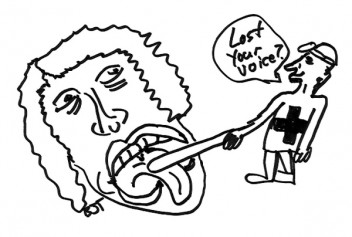
It’s important to define your voice very carefully before starting a conversation with your consumer today.
There has been a lot of talk about the impact of social media and the online world on brands. The typical patter goes something like this:
“The conversation is no longer one-way, with marketers sending messages to consumers. Now the consumer owns the brand and can say what he/she wants. Now it’s truly a two-way conversation and that changes everything.”
All true. But many reactionaries take this to mean that the brand strategy needs to be more fluid and less defined because of this new reality. Here, we disagree. Just because a brand is now in a conversation and cannot control both sides of the dialogue, does not mean that it need not know it’s own voice as well. On the contrary, we find that is more important than ever to deeply understand your Strategic Point of View and the implications for your voice in these conversations.
Just because you are in a conversation, it doesn’t mean that you can abdicate defining your own voice. Brands have always lived in the minds of consumers and employees. Now they can tell you exactly what they think at any point in time. And that is incredibly valuable. But, at the end of the day, it’s also important to focus on what you want people to believe about your brand’s reputation at the end of the day and to define your voice in the conversation on that basis.
To do this, we feel that marketers need to work ever harder to understand their brands in a holistic, anthropomorphic way. We eschew “brand personality” as it’s usually schizophrenic list of traits delivered by a committee. Defining the voice of the brand requires a more internally consistent understanding of the brand. For this, we believe archetypes are more useful. They present a consistent notion around who you are and make it clearer how to respond in a conversation.
There are classic lists of archetypes (the Hero, the Magician, the Lover, etc.) that have been referenced in books like The Hero and The Outlaw but we find that there are other useful archetypes that can be created as original thoughts to drive the brand. The “MOA” or Man of Action archetype that we created for Lee Jeans and Buddy Lee years ago is an example of a clear archetype that was brought to life for the clients and various creative teams by showing a reel of Harrison Ford movie characters over the years. Sometimes, archetypes exist in popular culture that are useful. Is this brand more John Wayne or Cary Grant? More Marilyn Monroe or Katherine Hepburn?
Overall, the new world order is not an excuse to make brands more fuzzy from a strategic perspective, but rather a call to arms to ensure your brand is truly and fully defined in a deeper, more nuanced way than ever before.


0 Comments
Comments are open. Leave one using the form below.